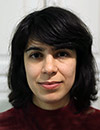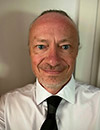Plenary Event
Optical Engineering Plenary
5 August 2025 • 3:30 PM - 5:40 PM PDT | Conv. Ctr. Room 6A
Session Chairs: Alexander M. J. van Eijk, TNO Defence, Security and Safety (Netherlands) and Jeremy P. Bos, Michigan Technological Univ. (United States)
3:30 PM - 3:40 PM:
Welcome and Opening Remarks
3:40 PM - 4:20 PM:
Structural Thermal Optical Performance (STOP) analysis for high power laser and cube-satellite
Structural-Thermal-Optical-Performance (STOP) analysis is essential for evaluating how structural and thermal loads influence the optical performance of systems across various applications, including laser manufacturing, space optics, and consumer electronics. This presentation introduces the Structural Thermal Analysis and Results (STAR) tool, which integrates structural and thermal data into optical simulations. We will demonstrate the STOP workflow with a focus on optical performance through two case studies: a high-power laser system and a CubeSat. High-power lasers are extensively utilized in applications such as laser cutting and welding, where thermal effects can significantly impact performance. Therefore, STOP analysis is crucial to ensure system reliability and precision. Similarly, CubeSats operate in harsh space environments, necessitating accurate STOP analysis to optimize optical systems and maintain functionality under the exposed conditions.
Sara Karami is a Senior Application Engineer with the Ansys Optics team, specializing in technical support for aerospace & defense (A&D), high-tech, and healthcare applications. She holds a master’s degree in photonics from McGill University and brings over eleven years of industry experience in optics. With a well-rounded skill set across the full suite of Ansys optics tools, Sara is highly proficient in optical system design, optimization, and system level simulation. Her current focus—and passion—is on developing and automating Multiphysics workflows to enable comprehensive system studies under a wide range of environmental conditions.
4:20 PM - 5:00 PM:
Advances in optical instrumentation for gemstone screening and identification
The gemological industry seeks accurate, fast, and accessible methods for examining gemstones to ensure transparency in the jewelry trade. However, advances in gemstone synthesis and artificial treatments have made identification increasingly complex. Existing techniques are often limited by high instrument costs, insufficient sensitivity, and incompatibility with faceted or polished stones. Interference from metal settings and adjacent gems, as well as material’s high index of refraction, further complicate analysis. This presentation summarizes recent advancements in imaging, spectroscopic, and hyperspectral imaging instrumentation tailored for gemstone identification and analysis. We will highlight innovative optical techniques developed for commercially important gemstones—including diamond, corundum (ruby and sapphire), emerald, and pearl—demonstrating the detection of color and clarity treatments, separation of natural and laboratory-grown materials, mineral type identification, and improved reliability in gemstone color assessment.
Tsung-Han Tsai is a Senior Research Scientist at the Gemological Institute of America (GIA), where he leads the development of advanced instrumentation for gemstone identification and grading. His work integrates spectroscopy, imaging, and illumination into high-throughput metrology systems. His research focuses on spectroscopic and imaging techniques for gemstone identification, natural diamond screening, treatment detection, and color origin analysis. Dr. Tsai holds a Ph.D. in Electrical and Computer Engineering from Duke University and is the author of over 30 publications and 10+ patents. His innovations advance the precision and automation of gemological instrumentation worldwide.
5:00 PM - 5:40 PM:
The many challenges of using optical remote sensing in planetary exploration and why it's totally worth it
Since the beginning of planetary exploration, optical remote sensing has been crucial for understanding the bodies in our solar system. Missions have utilized diverse multi- and hyperspectral imaging techniques to reveal previously unseen surfaces. This presents a significant challenge: how to design instruments without knowing what will be encountered, and how to establish requirements to initiate the design process. Additionally, these instruments must operate in harsh environments, facing extreme temperatures, radiation, and corrosive atmospheres. Finally, all of this must be achieved with minimal resources, using the least amount of power, built as light as possible, and still able to survive the extremes encountered during space missions.
Joern Helbert, a physicist, obtained his diploma in physics in 1997 from the Technical University of Braunschweig and his Doctorate in 2003 from the Free University Berlin. He has worked with ESA, JAXA, and NASA on missions like Mars Express, Venus Express, MESSENGER, and Hayabusa 2. As the lead for instruments on the BepiColombo, EnVision, and VERITAS missions, he collaborated globally. His research focuses on planetary surfaces using remote sensing technology. Over his career, Joern has published numerous scientific papers and contributed to several key discoveries about the composition and evolution of planetary surfaces. After over 20 years at DLR, they became Head of the Solar System section in the Science Directorate of the European Space Agency in 2025.
MENU: Coffee, decaf, and tea will be available outside the presentation room.
SETUP: Theater style seating.
3:30 PM - 3:40 PM:
Welcome and Opening Remarks
3:40 PM - 4:20 PM:
Structural Thermal Optical Performance (STOP) analysis for high power laser and cube-satellite
 |
Sara Karami
Ansys, Inc. (Canada) |
Structural-Thermal-Optical-Performance (STOP) analysis is essential for evaluating how structural and thermal loads influence the optical performance of systems across various applications, including laser manufacturing, space optics, and consumer electronics. This presentation introduces the Structural Thermal Analysis and Results (STAR) tool, which integrates structural and thermal data into optical simulations. We will demonstrate the STOP workflow with a focus on optical performance through two case studies: a high-power laser system and a CubeSat. High-power lasers are extensively utilized in applications such as laser cutting and welding, where thermal effects can significantly impact performance. Therefore, STOP analysis is crucial to ensure system reliability and precision. Similarly, CubeSats operate in harsh space environments, necessitating accurate STOP analysis to optimize optical systems and maintain functionality under the exposed conditions.
Sara Karami is a Senior Application Engineer with the Ansys Optics team, specializing in technical support for aerospace & defense (A&D), high-tech, and healthcare applications. She holds a master’s degree in photonics from McGill University and brings over eleven years of industry experience in optics. With a well-rounded skill set across the full suite of Ansys optics tools, Sara is highly proficient in optical system design, optimization, and system level simulation. Her current focus—and passion—is on developing and automating Multiphysics workflows to enable comprehensive system studies under a wide range of environmental conditions.
4:20 PM - 5:00 PM:
Advances in optical instrumentation for gemstone screening and identification
 |
Tsung-Han Tsai
Gemological Institute of America (United States) |
The gemological industry seeks accurate, fast, and accessible methods for examining gemstones to ensure transparency in the jewelry trade. However, advances in gemstone synthesis and artificial treatments have made identification increasingly complex. Existing techniques are often limited by high instrument costs, insufficient sensitivity, and incompatibility with faceted or polished stones. Interference from metal settings and adjacent gems, as well as material’s high index of refraction, further complicate analysis. This presentation summarizes recent advancements in imaging, spectroscopic, and hyperspectral imaging instrumentation tailored for gemstone identification and analysis. We will highlight innovative optical techniques developed for commercially important gemstones—including diamond, corundum (ruby and sapphire), emerald, and pearl—demonstrating the detection of color and clarity treatments, separation of natural and laboratory-grown materials, mineral type identification, and improved reliability in gemstone color assessment.
Tsung-Han Tsai is a Senior Research Scientist at the Gemological Institute of America (GIA), where he leads the development of advanced instrumentation for gemstone identification and grading. His work integrates spectroscopy, imaging, and illumination into high-throughput metrology systems. His research focuses on spectroscopic and imaging techniques for gemstone identification, natural diamond screening, treatment detection, and color origin analysis. Dr. Tsai holds a Ph.D. in Electrical and Computer Engineering from Duke University and is the author of over 30 publications and 10+ patents. His innovations advance the precision and automation of gemological instrumentation worldwide.
5:00 PM - 5:40 PM:
The many challenges of using optical remote sensing in planetary exploration and why it's totally worth it
 |
Jörn Helbert
European Space Agency (Netherlands) |
Since the beginning of planetary exploration, optical remote sensing has been crucial for understanding the bodies in our solar system. Missions have utilized diverse multi- and hyperspectral imaging techniques to reveal previously unseen surfaces. This presents a significant challenge: how to design instruments without knowing what will be encountered, and how to establish requirements to initiate the design process. Additionally, these instruments must operate in harsh environments, facing extreme temperatures, radiation, and corrosive atmospheres. Finally, all of this must be achieved with minimal resources, using the least amount of power, built as light as possible, and still able to survive the extremes encountered during space missions.
Joern Helbert, a physicist, obtained his diploma in physics in 1997 from the Technical University of Braunschweig and his Doctorate in 2003 from the Free University Berlin. He has worked with ESA, JAXA, and NASA on missions like Mars Express, Venus Express, MESSENGER, and Hayabusa 2. As the lead for instruments on the BepiColombo, EnVision, and VERITAS missions, he collaborated globally. His research focuses on planetary surfaces using remote sensing technology. Over his career, Joern has published numerous scientific papers and contributed to several key discoveries about the composition and evolution of planetary surfaces. After over 20 years at DLR, they became Head of the Solar System section in the Science Directorate of the European Space Agency in 2025.
Event Details
FORMAT: General session with live audience Q&A to follow presentations.MENU: Coffee, decaf, and tea will be available outside the presentation room.
SETUP: Theater style seating.

